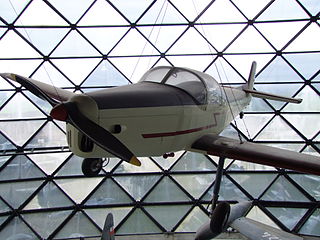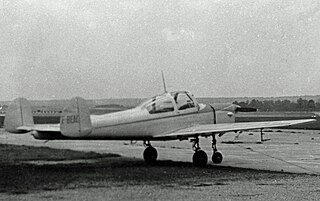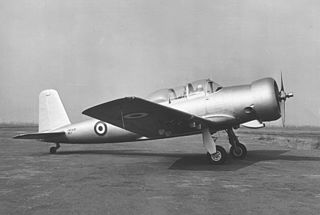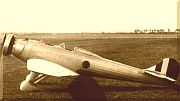
The LIBIS KB-6 Matajur was a 1950s Slovenian two-seat light monoplane designed and produced by LIBIS aircraft during Yugoslavian period.

The Fiat BRG was an Italian heavy bomber prototype built in the 1930s by Fiat for the Italian Air Force.

The Max Holste MH.52 was a 1940s French-built two-seat touring or training monoplane designed and constructed by Avions Max Holste.

The Farman F.430 was a 1930s French light transport designed and built by the Farman Aviation Works. Two variants with different engines were known as the F.431 and F.432.

The Fairchild 22 Model C7 was an American two-seat touring or training monoplane designed and built by the Kreider-Reisner division of the Fairchild Aircraft Corporation at Hagerstown, Maryland.

The Fiat G.49 was an Italian two-seat basic trainer designed by Giuseppe Gabrielli and built by Fiat.

The Nardi FN.305 was an Italian fighter trainer and liaison monoplane developed by the Fratelli Nardi company.

The SAIMAN 202 was a 1930s Italian two-seat cabin monoplane designed and built by the Società Industrie Meccaniche Aeronautiche Navali (SAIMAN).

The Nord 1221 Norélan was a 1940s three-seat training monoplane designed and built in France by Nord Aviation.

The Morane-Saulnier Vanneau is a two-seat basic trainer built in France by Morane-Saulnier and ordered by the French Air Force.

The Fiat G.5 was an Italian two-seat aerobatic tourer or trainer designed and built by Fiat Aviazione in small numbers.

The Avia 156 was a 1930s Czechoslovakian six-passenger commercial transport airliner for both mail and passengers, designed by Robert Nebesář and built by Avia. The type performed well but only one was built.
The Caudron C.480 Frégate was a French three-seat touring monoplane designed by Maurice Devlieger and built by Société des avions Caudron.
The Moskalyev SAM-5 was a 1930s Soviet transport or air ambulance monoplane designed by Aleksandr Moskalyev. The type served in small numbers in the Second World War as an air ambulance.

The Bastianelli P.R.B was a 1920s Italian flying-boat, the first product of Societá Industriale l'Aviazone.
The Bréguet 890 Mercure was a late 1940s French cargo and passenger transport aircraft designed by Bréguet Aviation. Three variants were produced including a military variant called the Mars but none entered production.

The Comte AC-12 Moskito was a 1930s Swiss three-seat light touring cabin monoplane produced by Flugzeugbau A. Comte.
The Eshelman FW-5 was a 1940s American experimental cabin monoplane designed and built at Dundalk, Maryland by the Cheston L. Eshelman Company.

The Focke-Wulf GL 18 was a 1920s German light transport monoplane, designed and built by Focke-Wulf.
The Blériot 106 was a 1920s French cabin monoplane designed and built by Blériot Aéronautique. First flown on 15 July 1924 the 106 was a single-engined shoulder-wing monoplane powered by a 480 hp (358 kW) Renault 12Jb inline piston engine. The pilot sat in an open cockpit behind the engine and an enclosed cabin had room for six passengers.
















